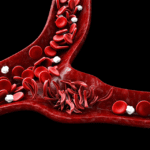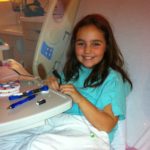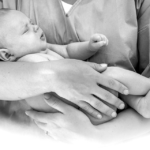Improving Guidelines for Pediatric Hypertension Diagnosis
Improving Guidelines for Pediatric Hypertension Diagnosis https://pediatricsnationwide.org/wp-content/uploads/2021/03/AdobeStock_104336092-1024x683.jpg 1024 683 Natalie Wilson Natalie Wilson https://pediatricsnationwide.org/wp-content/uploads/2021/06/Natalieheadshot3-2.png- September 01, 2020
- Natalie Wilson

It is vital to accurately recognize and diagnose hypertension in children to avoid long term morbidity and allow for appropriate treatment. A recent pilot study highlights additional diagnostic criteria for clinicians to consider.
Pediatric hypertension, or high blood pressure (BP), has become increasingly common and now affects over 3% of children and adolescents. Untreated, hypertension is one of the strongest risk factors for cardiovascular disease and mortality in adults, and there is now substantial evidence linking childhood hypertension to long-term renal, cardiovascular and neurodevelopment risks.
To avoid underdiagnosis, evaluation of BP percentiles should be a routine part of pediatric practice, but hypertension is more challenging to diagnose in children because of age-, sex-, and height-related variability in BP norms. Additionally, manually measuring BP across busy pediatric office visits can lead to inaccurate classification. A child’s heart rate and BP can be affected by activities (including going up the stairs before an appointment) or even by being nervous to see a doctor.
Instead, over the last decade, ambulatory BP monitoring (ABPM) has become the standard for diagnosing hypertension in children.
“Without using ABPM, the chance of making an error in your diagnosis is close to 40%, so the guidelines strongly recommend using ABPM,” says Mahmoud Kallash, MD, a physician in the Division of Pediatric Nephrology and Hypertension at Nationwide Children’s Hospital.
ABPM uses oscillometric machines to measure mean arterial pressure (MAP) by automatically collecting a series of readings over 24 hours while patients are in their home environments. From there, systolic and diastolic BP values are extrapolated based on manufacturer-specific formulas. Despite the availability of normative MAP values, current pediatric guidelines recommend using these calculated systolic and diastolic BP values rather than the measured MAP for hypertension diagnosis.
A recent pilot study challenged those guidelines. Published in Pediatric Nephrology and led by Dr. Kallash, the retrospective study of 263 patients found that considering the measured MAP values significantly improved diagnostic accuracy.
“If we don’t look at the MAP, there’s a chance that you can overdiagnose hypertension or miss patients who are hypertensive,” says Dr. Kallash. “Because systolic and diastolic blood pressures are calculated rather than measured, there’s a chance they may not be accurate.”
Overall, about 12% of patients studied had disagreements in their diagnoses depending on whether measured MAP or calculated systolic and diastolic BP was used. 22 subjects were diagnosed with hypertension based on average systolic and diastolic BP while they were not hypertensive when using the MAP. Nine subjects were classified as normal using systolic BP and diastolic BP criteria but hypertensive using MAP.
“We have published data about MAP and know the threshold of hypertension for children,” says Dr. Kallash. “Why not use the measured data?”
Additionally, this study was the first to investigate using adult criteria for diagnosing hypertension in male children who are greater than 165 cm tall. In adults, hypertension is diagnosed using a fixed threshold where the risk of cardiovascular disease and morbidity begins. Pediatric guidelines, on the other hand, are based on statistical designations — what percentile patients fall in — rather than cardiovascular disease risk.
For male children who are taller than 165 cm, the 95th percentile (hypertensive threshold) for average systolic and diastolic BP calculated using ABPM is higher than the hypertensive threshold used to define hypertension in adults. As a result, tall male children could have an ABPM study that would not result in a diagnosis of hypertension using pediatric criteria but would be interpreted as hypertension using adult criteria.
“Understanding this, we decided to evaluate the adult’s diagnostic criteria for the diagnosis of hypertension in children,” says Dr. Kallash, who is also an assistant professor of Pediatric Nephrology and the assistant program director of Nephrology at The Ohio State University.
When adult thresholds for diagnosis of ambulatory hypertension were applied,10 subjects (4% of the total study population and 11% of males taller than 165 cm) were found to be hypertensive who were not categorized this way under pediatric criteria. As a result, using the higher pediatric thresholds for this subgroup may allow patients who are at risk for cardiovascular complications to go undiagnosed.
Both under- and over-diagnosis of pediatric hypertension can have negative effects on children.
“Patients with chronic kidney disease or heart disease may already take many medications and adding an unnecessary medication can have a major effect on their physical and mental health,” says Dr. Kallash. “Also, if left untreated, hypertension can result in a faster progression of patients’ renal or cardiac disease.”
This study raises questions on whether the diagnosis of pediatric ambulatory hypertension could be further improved. Future research, such as a prospective, multicenter study is needed to help determine which criteria should be utilized to reduce long term morbidity and to better define the clinical relevance of including MAP in the diagnosis and management of children with ambulatory hypertension.
“Special attention should also be given to the effect of using MAP in patients with chronic kidney disease and heart disease,” says Dr. Kallash.
Reference:
Thomas J, Stonebrook E, Klamer B, Patel HP, Kallash M. Challenges of diagnosing pediatric hypertension using ambulatory blood pressure monitoring. Pediatric Nephrology. 2020 Aug 6 [Epub ahead of print].
Image credit: Nationwide Children’s
About the author
Natalie is a passionate and enthusiastic writer working to highlight the groundbreaking research of the incredible faculty and staff across Nationwide Children's Hospital and the Abigail Wexner Research Institute. Her work at Nationwide Children's marries her past interests and experiences with her passion for helping children thrive and a long-held scientific curiosity that dates back to competing in the Jefferson Lab Science Bowl in middle school. Natalie holds a bachelor’s degree in sociology from Wake Forest University, as well as minors in women's, gender & sexuality studies and interdisciplinary writing. As an undergraduate student, Natalie studied writing and journalism, engaged with anthropological and sociological research with a focus on race and ethnic relations, served as executive editor for the student newspaper, the Old Gold & Black, and gained marketing experience as an intern for a nonprofit entrepreneurial incubator, Winston Starts, as well as by working for Wake Forest University School of Law Office of Communication and Public Relations and its Innocence and Justice Clinic.
-
Natalie Wilsonhttps://pediatricsnationwide.org/author/natalie-wilson/
-
Natalie Wilsonhttps://pediatricsnationwide.org/author/natalie-wilson/
-
Natalie Wilsonhttps://pediatricsnationwide.org/author/natalie-wilson/
-
Natalie Wilsonhttps://pediatricsnationwide.org/author/natalie-wilson/
- Posted In:
- Clinical Updates
- In Brief









